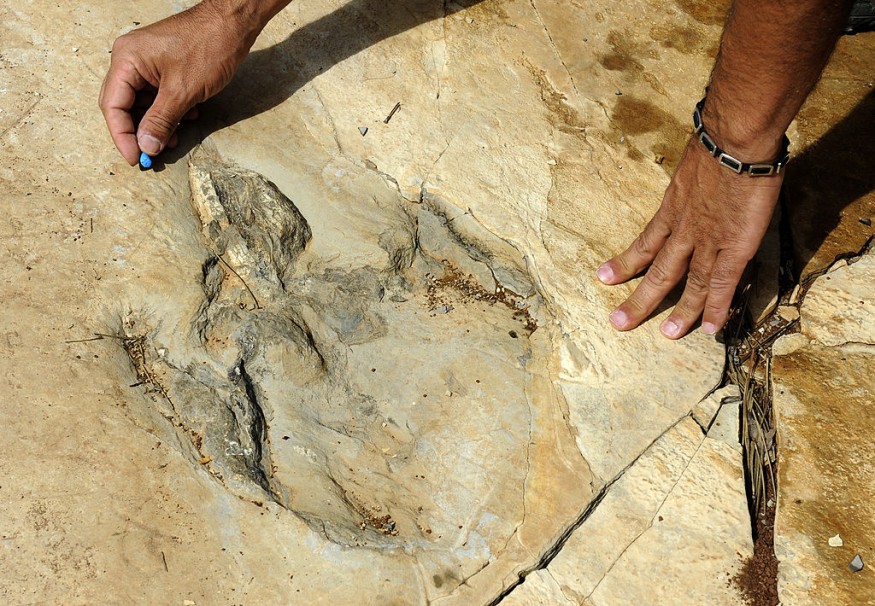Spain was discovered with a new dinosaur track made by a theropod species. According to the experts, the mark was left by the gigantic beast 129 million years ago. The preserved print was unique due to the dinosaur foot being damaged.
Dinosaur Tracks in Las Hoyas

The Autonomous University of Madrid scholars discovered the million-year-old tracks left by a massive dinosaur and are more likely a cousin of the famous Tyrannosaurus rex.
The new dinosaur tracks were unearthed in a paleontological site in Las Hoyas, a village located near Cuenca, Spain.
The exceptional find revealed that the right foot tracks of the dinosaur had three toes, while the left foot track showed a deformity caused by an injury in the middle toe.
Madrid's Center for the Integration in Paleobiology specialist Carlos Herrera-Castillo, who served as the study's lead author, explained that the footprints they stumbled upon were spaced widely compared to other theropod tracks discovered in previous studies. The features suggest that the dinosaur purposely adjusted its gait to help its injured foot function, Herrera-Castillo continued.
The species of the theropod that owned the footprint is still a mystery for the experts. A hint from the site suggests that the dinosaur imprinted its foot while swimming alongside fish of the prehistoric pond, which existed millions of years back in the area.
Daily Mail reports that the unidentified theropod measures about six feet and six inches.
The middle toe of the dinosaur was supposed to be extended generally like other theropod species, but on its left foot, the beast had its inner digit curled backward. The authors theorized that the reason behind the dinosaur's condition was probably a fight over territory or unintentional damage inflicted by its partner during mate.
ALSO READ : Why Did T. Rex Have Small Arms? Shorter Forelimbs May Have Saved Them During Feeding Frenzies, Study Claims
Deformed Theropod Toe
Herrera-Castillo said that the new tracks on the Las Hoyas site presented a pair of footprints, one showing marks from all three toes, while a distorted set of irregularly-shaped toes represented the other.
Other prints left by the deformed left toe of the dinosaur showed similar patterns, confirming that the marks were indeed from an injured part and not tampered by natural soil corrosion.
The compensation of the normal foot at the right is evident through the greater weight it showed on the marks. This allowed support for the injured left foot and enabled the dinosaur to roam the territories despite its condition.
The injury presented by the prehistoric footprints is prevalent not only in dinosaurs but also in modern birds. The most common foot deformity that experts discover throughout international sites is similar to this case, wherein the damage is relayed on the inner toe.
Last month, a separate set of footprints excavated in Russia showed a similar setup. The marks were 68 million years old and were left by a hadrosaur known as Amurosaurus riabinini.
This dinosaur had a long beak similar to ducks and a physical body measured 20 meters in height. The hadrosaur lived during the Cretaceous period when many dinosaur species ruled the planet.
The study on Spain's new dinosaur footprints was published in the journal PLOS ONE, titled "A theropod trackway providing evidence of a pathological foot from the exceptional locality of Las Hoyas (upper Barremian, Serranía de Cuenca, Spain)."
RELATED ARTICLE : Prehistoric Life in Bisti/De-Na-Zin Wilderness and How it Became Sands and Stones Today
Check out more news and information on Paleontology in Science Times.
© 2026 ScienceTimes.com All rights reserved. Do not reproduce without permission. The window to the world of Science Times.











